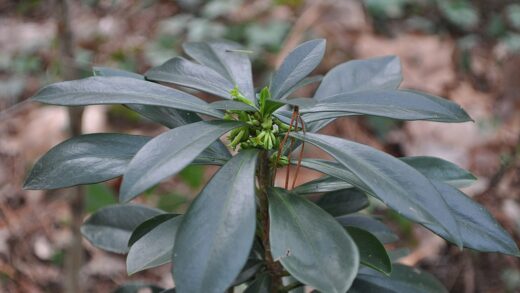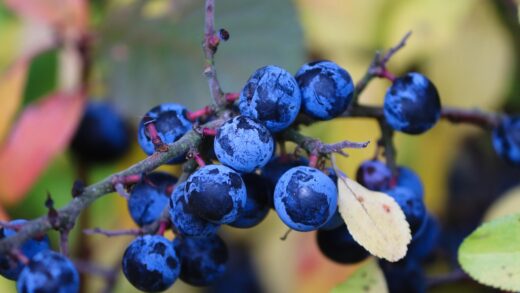While aloe vera is a remarkably self-sufficient plant, providing it with the appropriate nutrients through fertilization can support its health, encourage robust growth, and enhance its vibrant color. However, it is crucial to approach fertilization with a “less is more” philosophy, as these succulents have evolved in nutrient-poor, sandy soils and are not heavy feeders. Over-fertilization is a far greater risk than under-fertilization and can cause significant harm, including chemical burns to the delicate root system. Understanding the plant’s modest nutrient needs is the first step toward developing a safe and effective feeding regimen.
The primary goal of fertilizing an aloe vera is to replenish the essential micronutrients in the potting soil that may become depleted over time, especially for plants that have been in the same pot for several years. This gentle supplementation can give the plant the resources it needs to produce strong new leaves and, in mature plants, to support the growth of offshoots. The key is to provide these nutrients in a very dilute form and only during the periods when the plant can actually use them.
A common mistake is to apply standard houseplant fertilizer at its full recommended strength, which is far too potent for a succulent like aloe vera. This can lead to a rapid buildup of mineral salts in the soil, creating a toxic environment for the roots. Instead, a specific, balanced fertilizer formulated for cacti and succulents is the ideal choice, and even this should be diluted to half or a quarter of its recommended strength to ensure it is gentle enough for the plant.
Timing is just as important as the type and strength of the fertilizer. Aloe vera has distinct growing and dormant seasons, and providing nutrients when the plant is not actively growing is not only useless but also potentially harmful. By aligning your fertilization schedule with the plant’s natural growth cycle, you can provide a beneficial boost without overwhelming its sensitive system. This careful approach will help ensure your aloe remains a healthy and thriving specimen.
Aloe vera’s modest nutrient needs
Aloe vera plants are native to arid regions where the soil is typically sandy, rocky, and low in organic matter. This evolutionary background has shaped them into highly efficient organisms that are adapted to thrive with very few nutrients. They do not have the same demand for regular feeding as lush, tropical foliage plants or fast-growing annuals. Their growth rate is naturally slow and steady, and they are adept at conserving the resources they manage to acquire.
More articles on this topic
In a potting environment, the initial soil mix provides the plant with a good starting supply of nutrients. For the first year after planting or repotting, an aloe vera generally does not require any additional fertilizer at all. It will happily draw what it needs from the fresh soil. It is only after this period, as the plant absorbs the available nutrients and some are leached out through watering, that a very light feeding schedule might become beneficial.
The essential nutrients for an aloe vera are the same as for most plants: nitrogen (N), phosphorus (P), and potassium (K), along with a range of micronutrients. A balanced fertilizer, where these three primary nutrients are present in roughly equal proportions, is ideal. A formula such as a 10-10-10 or a 5-5-5, heavily diluted, works well. Avoid fertilizers that are very high in nitrogen, as this can promote weak, leggy growth rather than the strong, compact form that is desirable in succulents.
It is important to recognize that for an aloe vera, good soil health, proper watering, and adequate light are far more critical to its well-being than fertilization. A plant that is struggling due to poor light or overwatering will not be saved by fertilizer; in fact, feeding a stressed plant can often make the situation worse. Fertilization should be seen as a minor supplement for an already healthy plant, not a cure for underlying cultural problems.
Choosing the right fertilizer
When selecting a fertilizer for your aloe vera, the best choice is a product specifically formulated for cacti and succulents. These fertilizers are designed with the low-nutrient requirements of these plants in mind and typically have a balanced N-P-K ratio. They are available in several forms, but a liquid or water-soluble fertilizer is often the easiest to use, as it allows for precise control over the concentration.
More articles on this topic
If a specialized succulent fertilizer is not available, a balanced, all-purpose houseplant fertilizer can be used, but it absolutely must be diluted. A general rule of thumb is to dilute it to at least half the strength recommended on the packaging for regular houseplants. For aloe vera, being even more cautious and diluting it to one-quarter strength is a very safe and effective approach. This ensures you provide a gentle dose of nutrients without risking fertilizer burn.
The form of the fertilizer is a matter of preference. Liquid fertilizers are mixed with water and applied during a regular watering session, providing immediate nutrient availability. Granular, slow-release fertilizers are another option, where small pellets are mixed into the top layer of soil and release nutrients gradually over several months. While convenient, they offer less control, and it can be harder to prevent a buildup of salts over time. For these reasons, most succulent enthusiasts prefer the control offered by a diluted liquid feed.
Regardless of the type you choose, always read the label carefully to understand the nutrient content and application instructions. Remember to adapt these instructions for the specific needs of your aloe vera. It is always better to err on the side of caution and under-fertilize. A nutrient-deficient aloe vera is a rare sight and easily corrected, while an over-fertilized one with burned roots is much harder to save.
Fertilization schedule and timing
The timing of fertilizer application is a critical factor for success and is dictated entirely by the plant’s natural growth cycle. Aloe vera, like most plants, has an active growing period and a dormant period. Fertilizing should only ever occur during the active growing season, which for aloe vera is typically in the spring and summer months. This is when the plant is actively producing new leaves and can utilize the extra nutrients.
During the spring and summer, a very light feeding schedule is all that is required. Applying a diluted fertilizer solution once a month is generally more than sufficient for a healthy plant. Some growers prefer an even more conservative approach, fertilizing only two or three times over the entire growing season. The key is to be consistent but sparse. Mark your calendar to keep track of applications and avoid accidentally fertilizing too frequently.
As autumn approaches and the days become shorter and cooler, you must cease all fertilization. The plant will naturally begin to slow its growth and enter a period of dormancy for the winter. Feeding a dormant plant is not only ineffective, as it cannot absorb the nutrients, but it is also harmful. The unused fertilizer salts will accumulate in the soil, potentially burning the inactive roots and causing long-term damage.
You should also never fertilize a plant that has just been repotted. The fresh potting mix contains all the nutrients the plant needs, and its root system is in a delicate state of recovery. Wait at least four to six months after repotting before resuming any fertilization routine. Similarly, do not fertilize a plant that is stressed, sick, or showing signs of overwatering, as this will only add more stress to an already compromised system.
Signs of nutrient deficiency and excess
Recognizing the signs of improper fertilization can help you adjust your care routine. A true nutrient deficiency in aloe vera is uncommon, but if it does occur, the signs can be quite subtle. The primary symptom would be a general lack of vigor and stalled growth in a mature plant during the peak growing season. The leaves might also appear somewhat paler or less vibrant than usual, though this can also be a sign of inadequate light.
Another potential sign of deficiency could be a reluctance to produce offshoots or pups in a healthy, mature plant. Since producing new plants is an energy-intensive process, a lack of essential nutrients might inhibit this reproductive growth. However, it is important to rule out all other potential causes, such as insufficient light, improper watering, or being pot-bound, before concluding that a lack of nutrients is the problem.
In contrast, the signs of excess fertilization are much more dramatic and damaging. The most common symptom is “fertilizer burn,” which manifests as brown, crispy leaf tips or margins. This occurs when the high concentration of mineral salts in the soil draws moisture out of the plant’s tissues and damages the roots, preventing them from absorbing water properly. This can cause the plant to look wilted or thirsty, even when the soil is moist.
A white, crusty buildup on the surface of the soil or around the pot’s drainage hole is another clear sign of excess fertilizer salts accumulating. If you notice these symptoms, you should stop fertilizing immediately. To remedy the situation, you can flush the soil by watering the plant thoroughly several times in a row, letting the water drain completely each time. This helps to leach the excess salts out of the soil. In severe cases, repotting the plant in fresh soil may be necessary to save it.


















